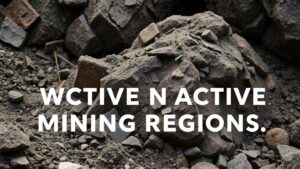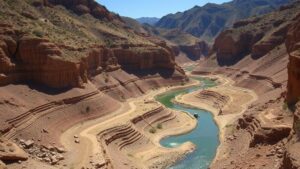Spotting Gold Deposits in Volcanic Ash Beds Near Historic Eruptions
Spotting Gold Deposits in Volcanic Ash Beds Near Historic Eruptions
The search for gold has driven many explorers and scientists into remote locations across the globe. One intriguing area often overlooked lies in volcanic ash beds, particularly those formed by historic eruptions. Understanding the relationship between volcanic activity and gold deposits can unlock significant potential for prospectors. This article explores this connection, offering insights into how to recognize promising areas for gold deposition.
The Relationship Between Volcanic Eruptions and Gold Deposits
Gold deposits can be closely associated with volcanic activity. When magma rises to the surface during an eruption, it can carry a variety of minerals, including gold. Cooling of these mineral-rich magmas can lead to the formation of veins that eventually become rich in gold. According to geologic studies, approximately 75% of the world’s gold is found in surrounding volcanic regions, indicating a strong correlation.
Characteristics of Volcanic Ash Beds
Volcanic ash beds typically consist of fine fragments of rock and minerals ejected during volcanic eruptions. These beds can vary in composition but often include clays, silica, and metal oxides. Recognizing key characteristics can help prospectors identify industrial viability:
- Presence of Heavy Minerals: Gold is often found alongside black sands, which include magnetite and ilmenite.
- Layering and Structure: Distinct layers in ash beds can indicate periods of explosive volcanic activity.
Identifying Historic Eruptions
To maximize the search for gold, understanding the history of volcanic eruptions in a region is essential. Areas with documented eruptions can provide clues on where to find rich deposits.
Historical records and geological surveys are vital resources. For example, the 1980 eruption of Mount St. Helens significantly altered the landscape and has been the focus of study for mineral deposit formation. U.S. Geological Survey has mapped the post-eruption deposits, revealing areas with enhanced metal concentrations attributable to the event.
Techniques for Gold Prospecting in Ash Beds
Effective prospecting involves several methodologies, ranging from traditional panning to modern technology. Here are some commonly employed techniques:
- Gold Panning: This basic technique allows prospectors to separate gold from lighter materials by utilizing the density differences.
- Geochemical Sampling: Soil and sediment analysis can reveal the presence of gold particles and associated minerals.
- Geophysical Surveys: Techniques such as ground penetrating radar (GPR) can help detect mineral deposits beneath the surface.
Challenges in Prospecting Volcanic Ash Beds
Despite the potential rewarding outcome, prospecting in volcanic ash beds can pose challenges:
- Environmental Risks: Eruptions can lead to hazardous conditions, making some areas inaccessible for safe exploration.
- Regulatory Hurdles: Conducting mining operations near historic sites may face legal restrictions due to conservation efforts.
Real-World Applications and Case Studies
Several regions around the world illustrate successful gold prospecting in volcanic ash deposits. For example, the Ashanti goldfields in Ghana are situated in volcanic belts and are renowned for yielding high-grade gold deposits. Similarly, the Sudbury Basin in Canada, a result of a historic meteor impact, has also been associated with volcanic activity and enriched mineral deposits, including gold.
Conclusion and Actionable Takeaways
Spotting gold deposits in volcanic ash beds near historic eruptions is a promising endeavor combining geological science with practical prospecting techniques. Understanding the association between volcanic activity and mineral deposition, recognizing the unique characteristics of ash beds, and employing effective prospecting methods can increase the likelihood of success in the search for gold.
As a prospective gold seeker, begin by researching volcanic regions with documented eruptions and relate their geological history to gold deposition. Equip yourself with essential prospecting tools, and always remain informed about environmental and legal considerations in conservation areas. With the right approach, the quest for gold in volcanic landscapes could yield rich rewards.


